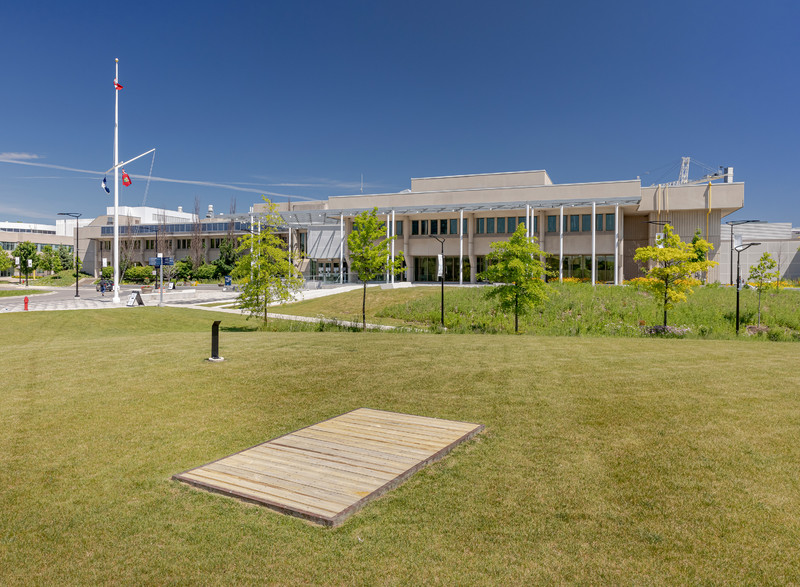
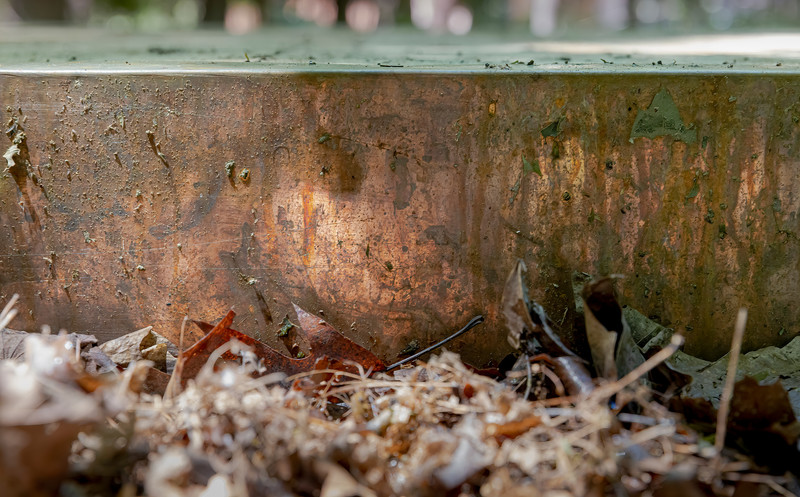
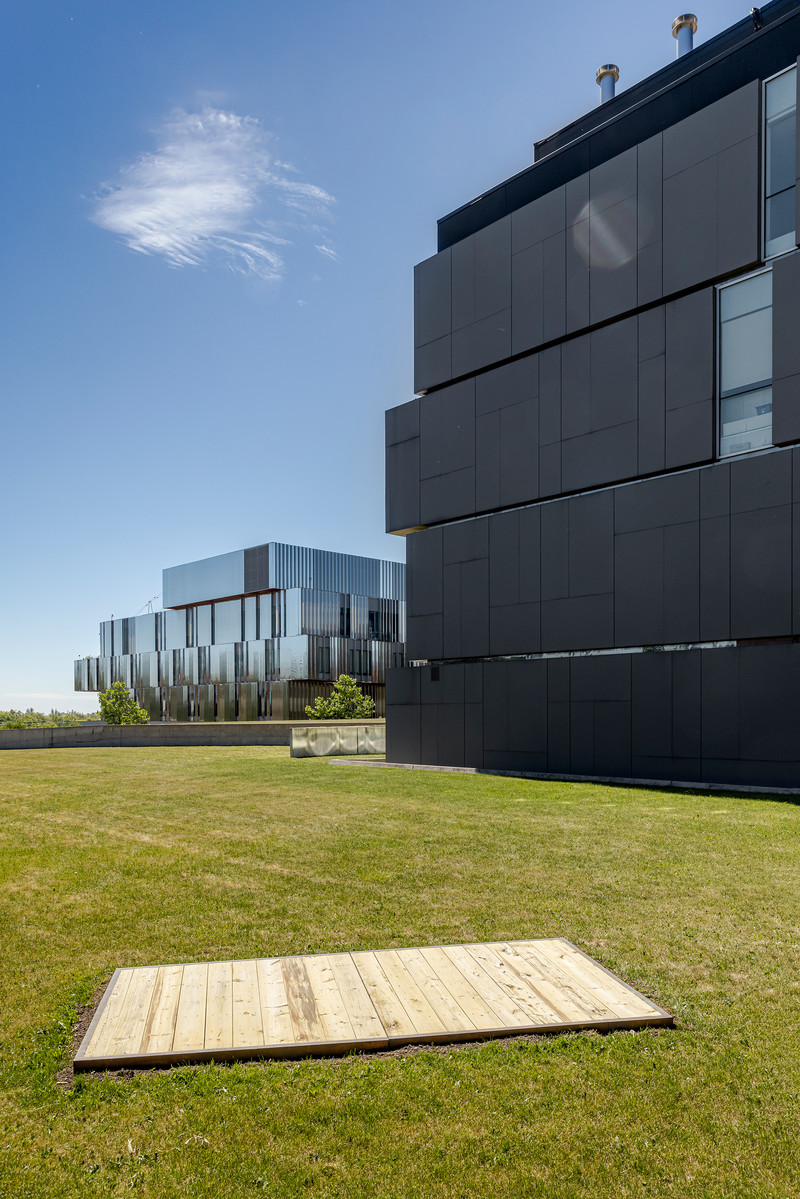
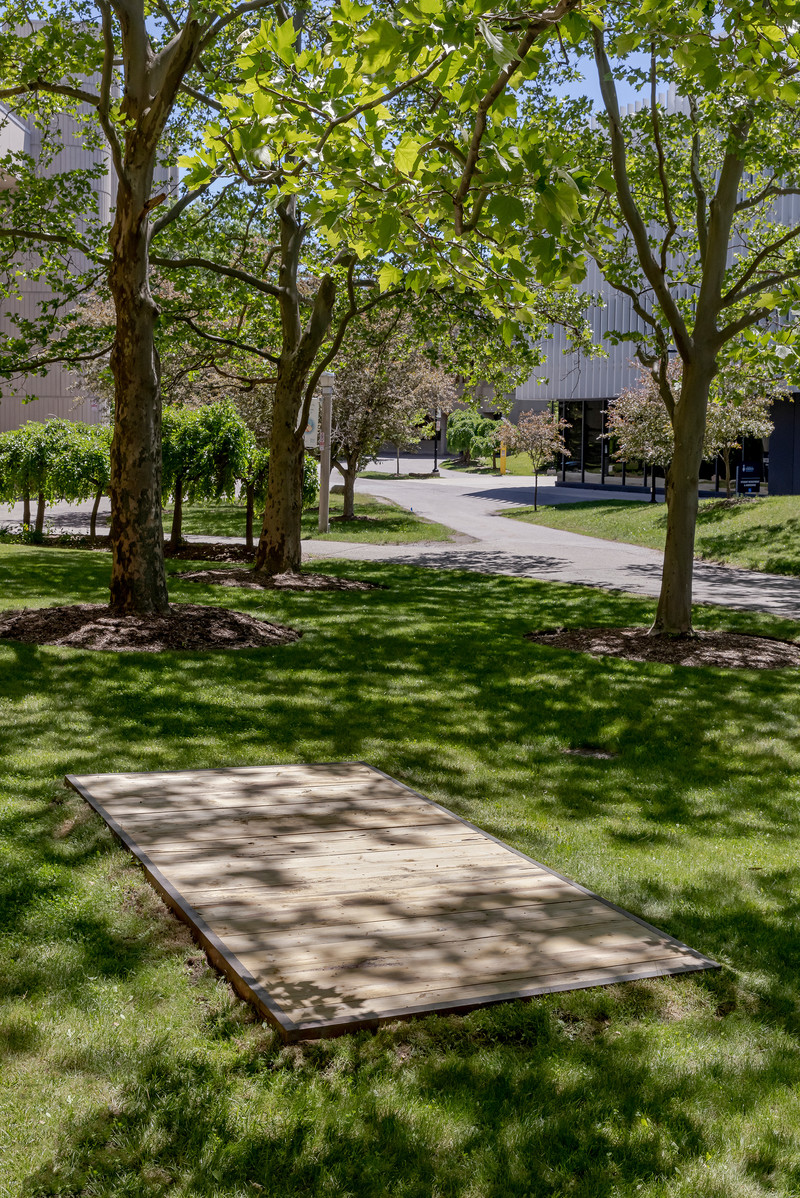
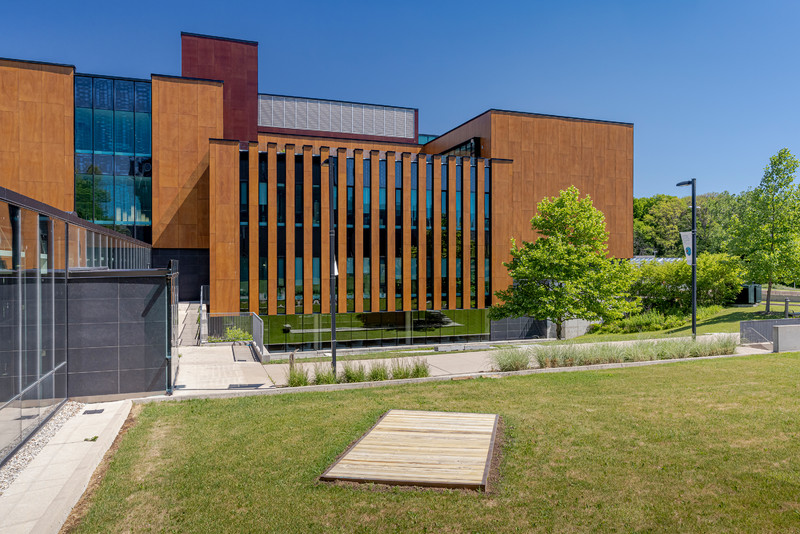
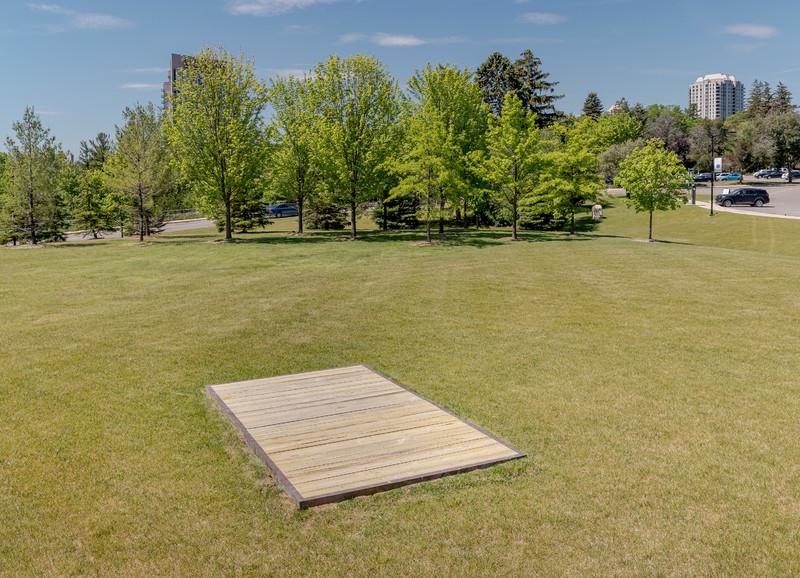
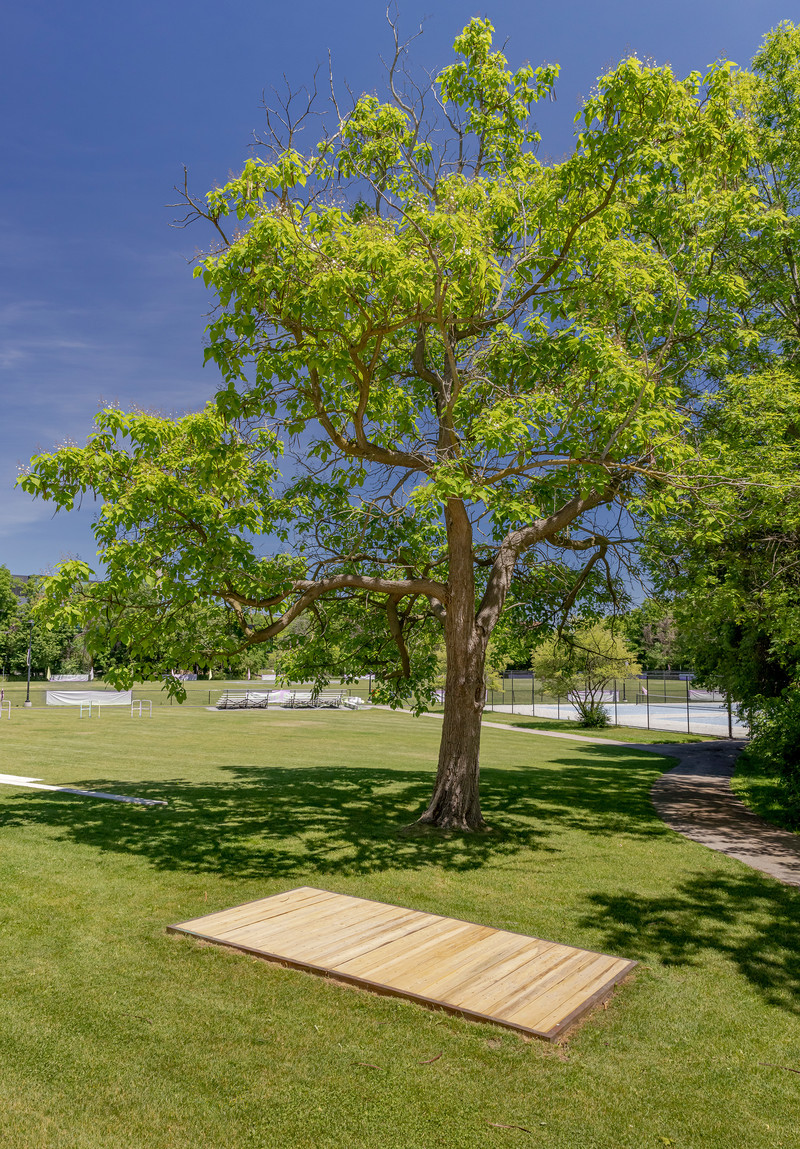
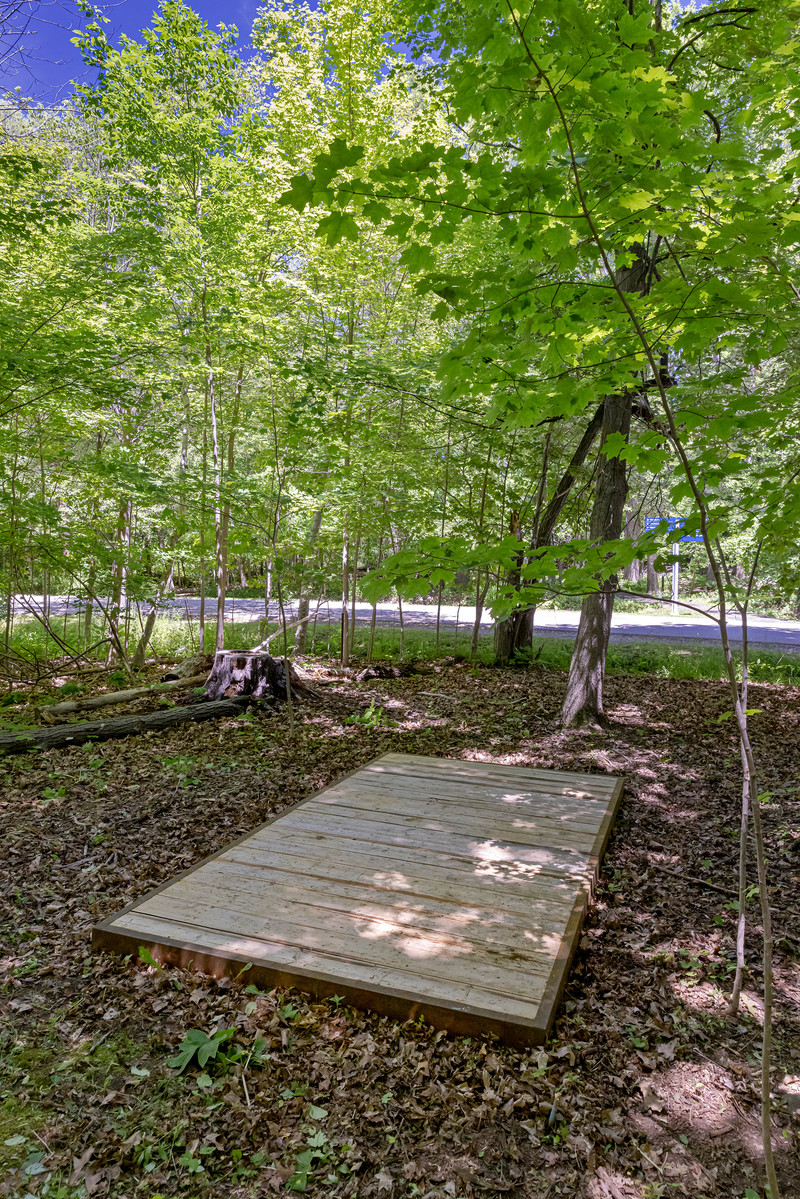
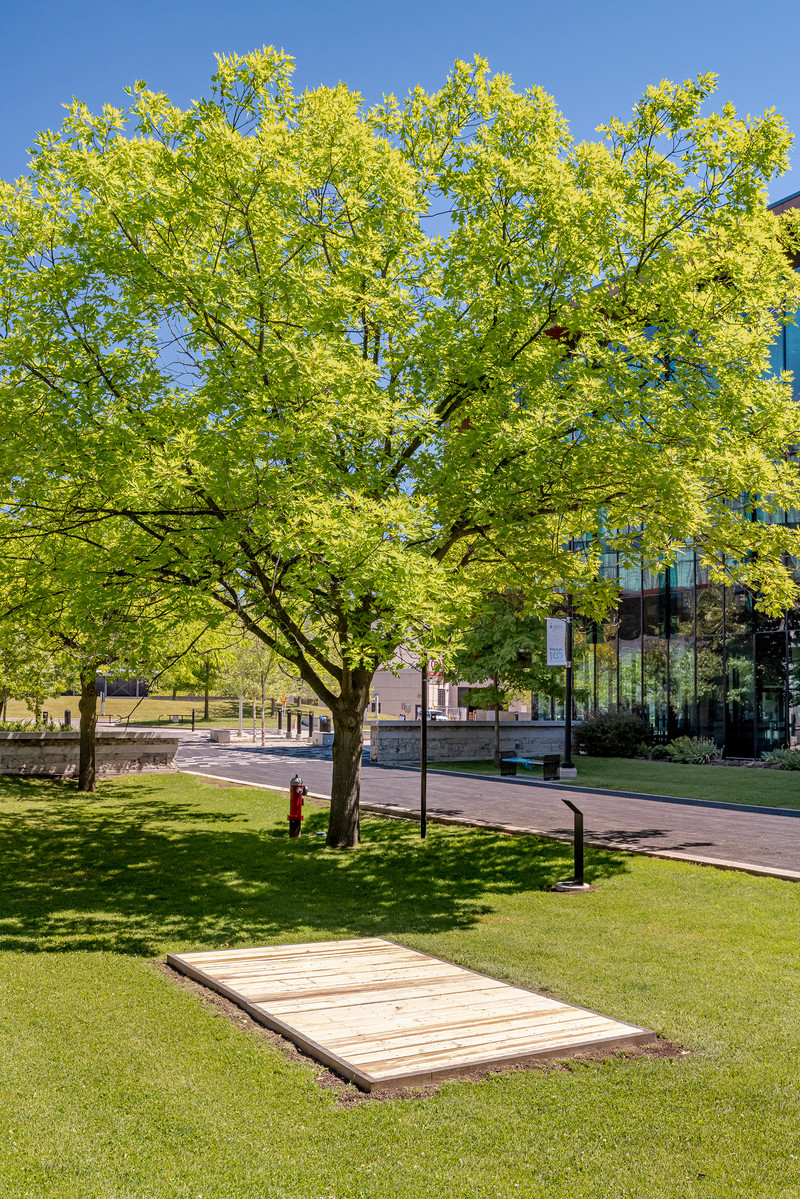
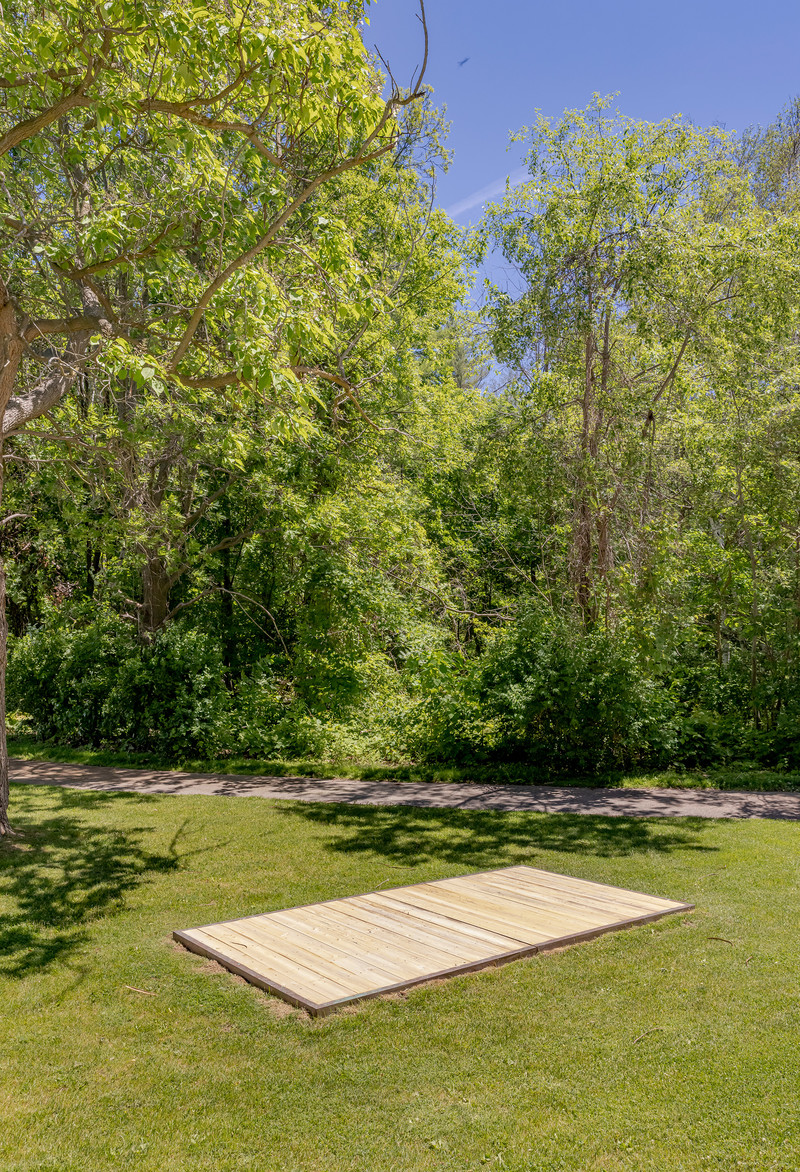
Agamiing – Niwaabaandaan miinawaa Nimikwendaan // At the Lake – I see and I remember
Miner’s artwork begins with the Anishinaabemowin word agamiing, which signifies “to be at the lake, at the shore, or at the water.” Miner explores waterways, such as the Credit River and Lake Ontario, as important historic and contemporary places where different peoples, ecologies, and worlds meet.
Agamiing […] consists of seven platforms built from old-growth lumber and copper, which are each installed in distinct sites across the campus. Materially, the platforms’ copper detailing is symbolically rich: it recalls early mineral extraction in the Great Lakes region, and references the sacred use of copper for holding and carrying water in many Indigenous communities. Rematriating copper and old-growth wood harvested from Lake Ontario back to the land, Miner’s work also explores the non-linear temporal concept of aanikoobijigan (ancestors/descendants), serving to bring past, present, and future into dialogue with one another.
Miner’s platforms serve as sites for people to meet, reflect, and learn. Students, staff, and faculty are encouraged to use them for class visits and meetings. Visitors are welcome to respectfully touch, sit, or stand on the artwork.
This artwork was first presented offsite at Southdown Industrial Area, Mississauga, for the Blackwood’s 2018 program The Work of Wind: Air, Land, Sea. Southdown is a complex 1.5 sq. km area, bordered by Clarkson to the north and Lake Ontario to the south, featuring an oil and lubricants refinery, a carbon dioxide production facility, a nursery, heritage sites, brownfields, commercial transport hubs, a wastewater treatment plant, a cement plant, a gypsum pier, a rail line, a hazardous waste management facility, fields of phragmites, a fruit distribution centre, an abandoned paint and resin plant, a working hay farm, a radio transmission field, among others. Artworks were presented site-sensitively throughout the industrial area for the 10-day festival.

The Blackwood
University of Toronto Mississauga
3359 Mississauga Road
Mississauga, ON L5L 1C6
[email protected]
(905) 828-3789
The galleries are open. Hours of operation: Monday–Saturday, 12–5pm.
Holiday hours: regular gallery hours are in effect until and including Saturday, December 6. The galleries will then be closed for the holidays, except for regular hours on Saturday, December 13. In 2026, the galleries reopen Monday, January 5.
Facebook | Twitter | Instagram
Sign up to receive our newsletter.
The Blackwood is situated on the Territory of the Mississaugas of the Credit, Seneca, and Huron-Wendat.